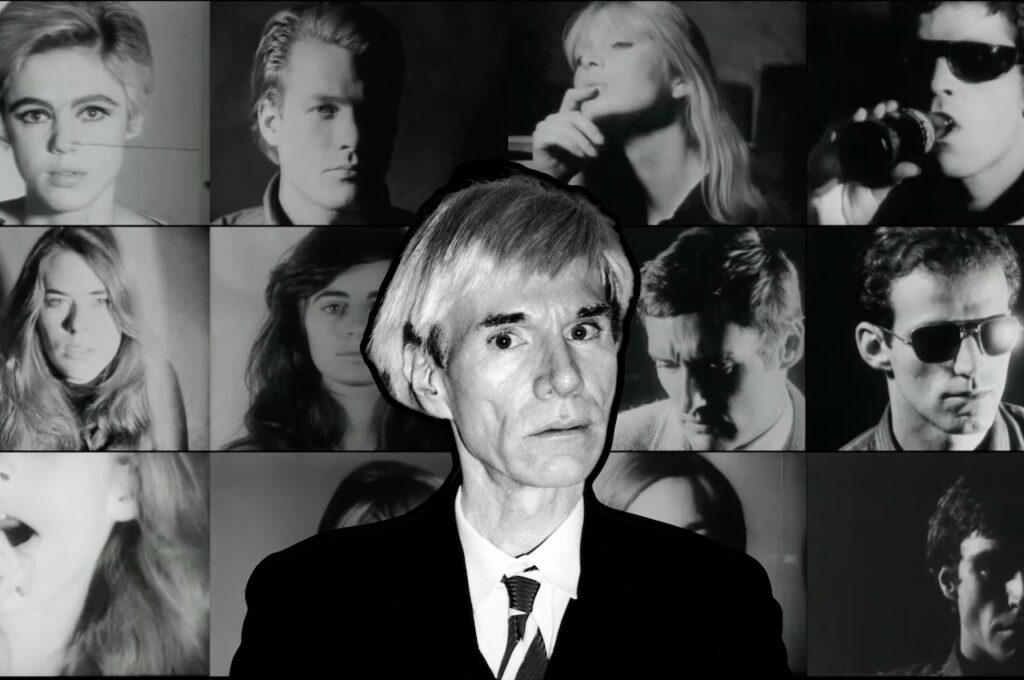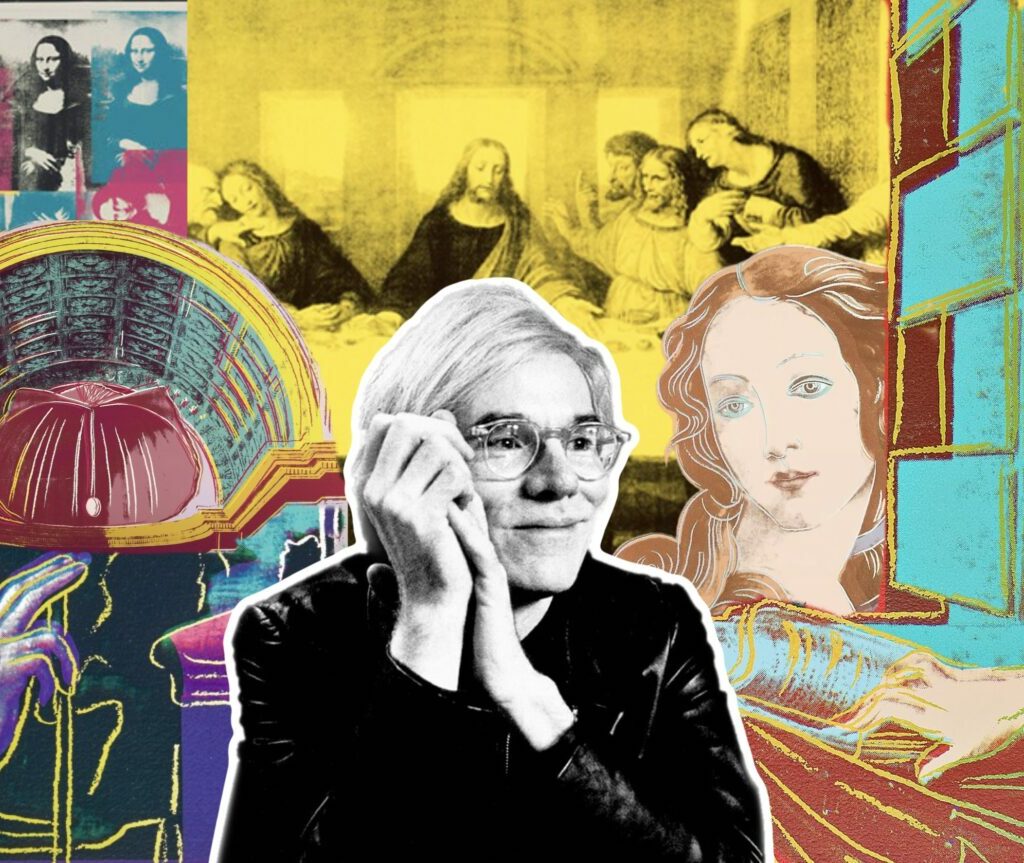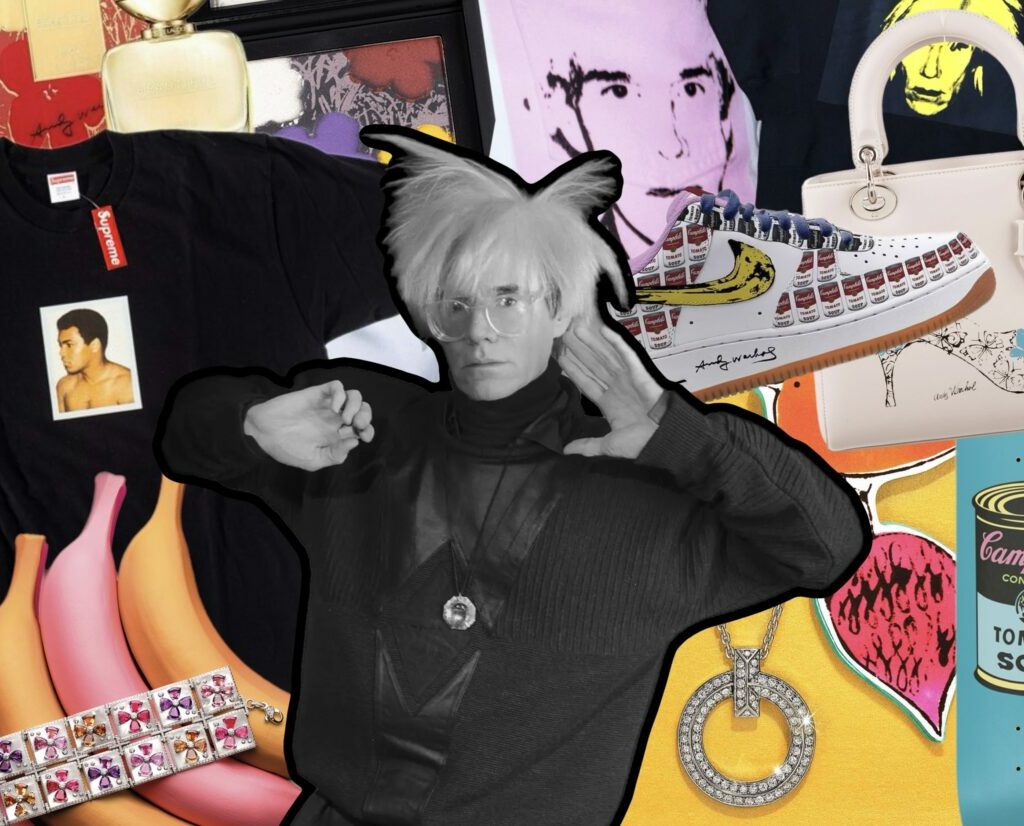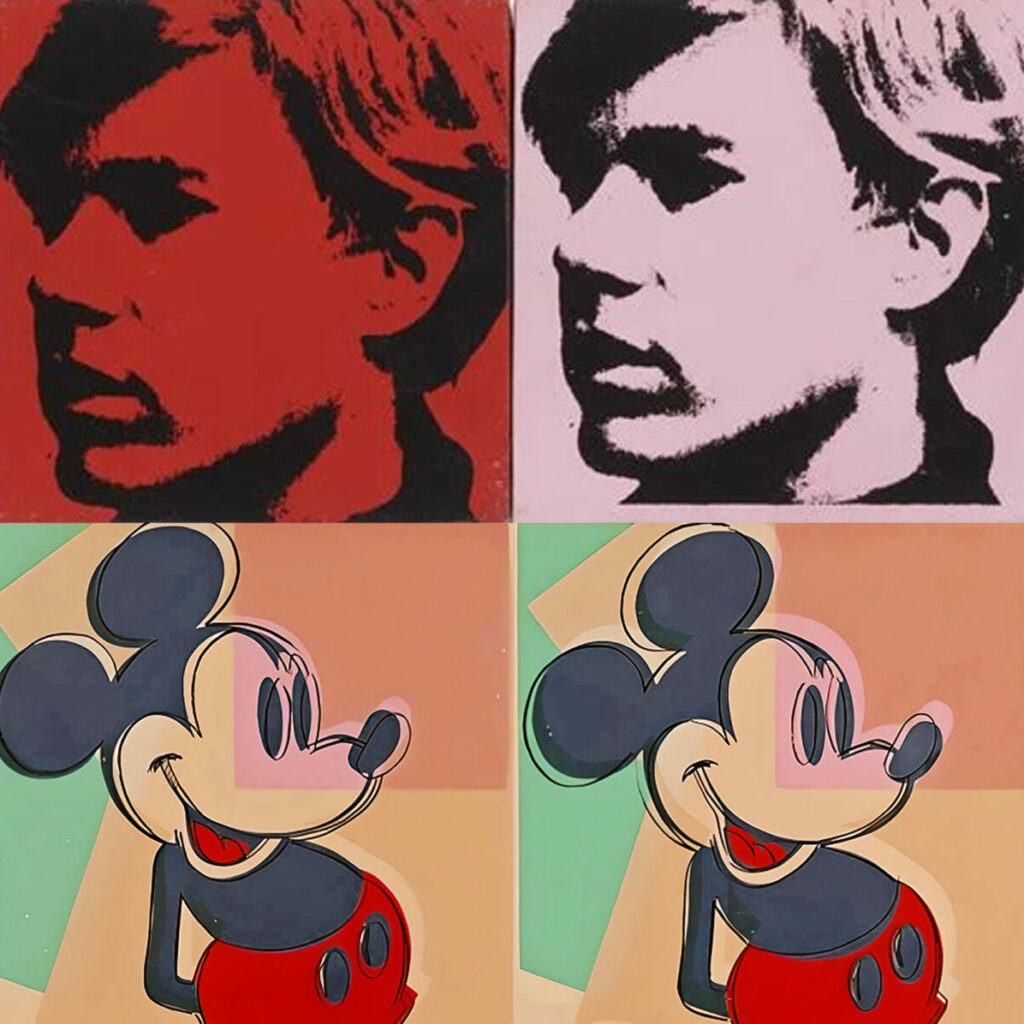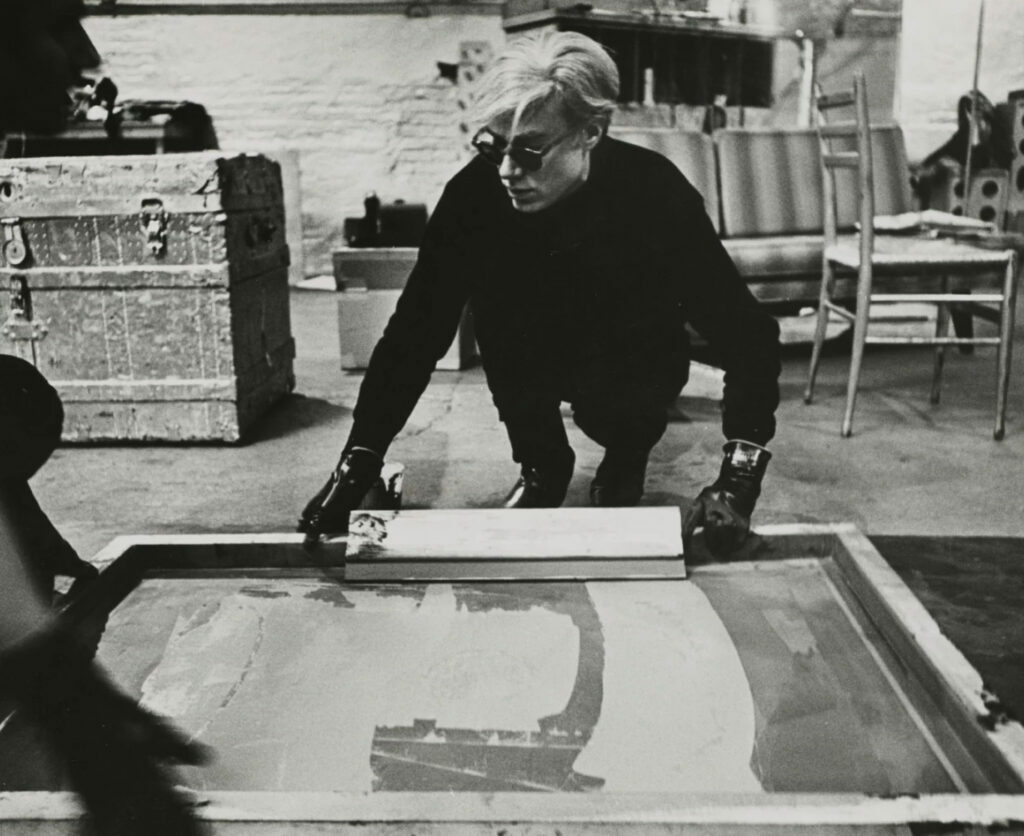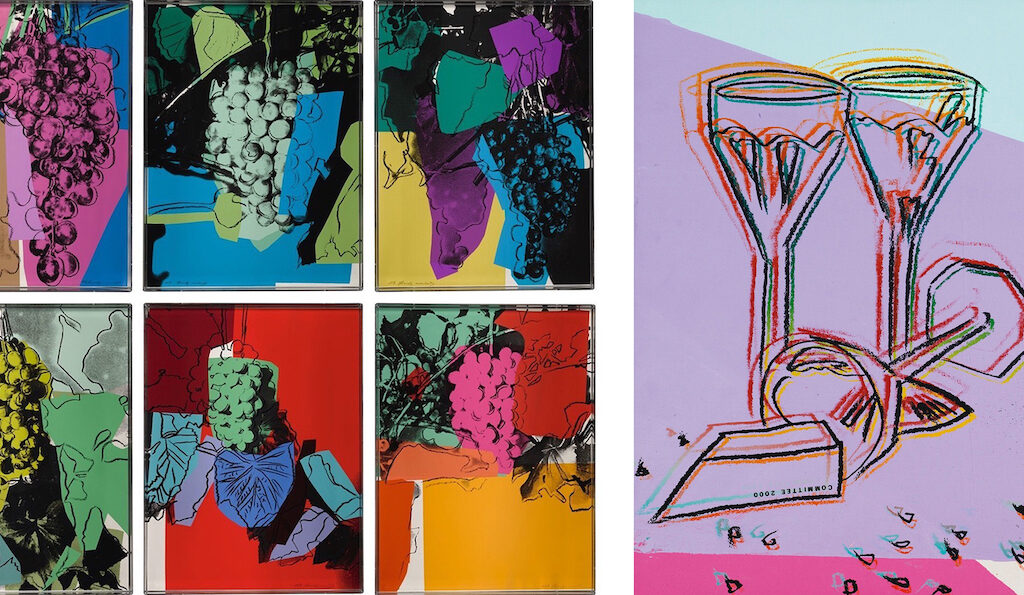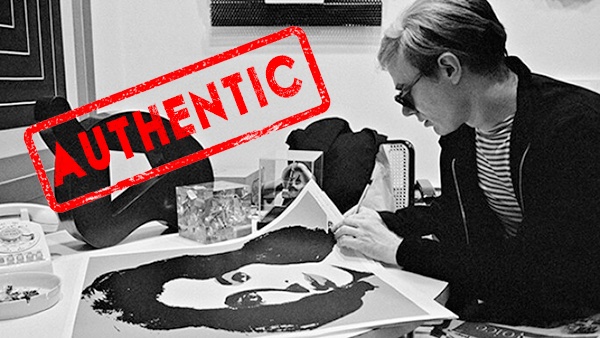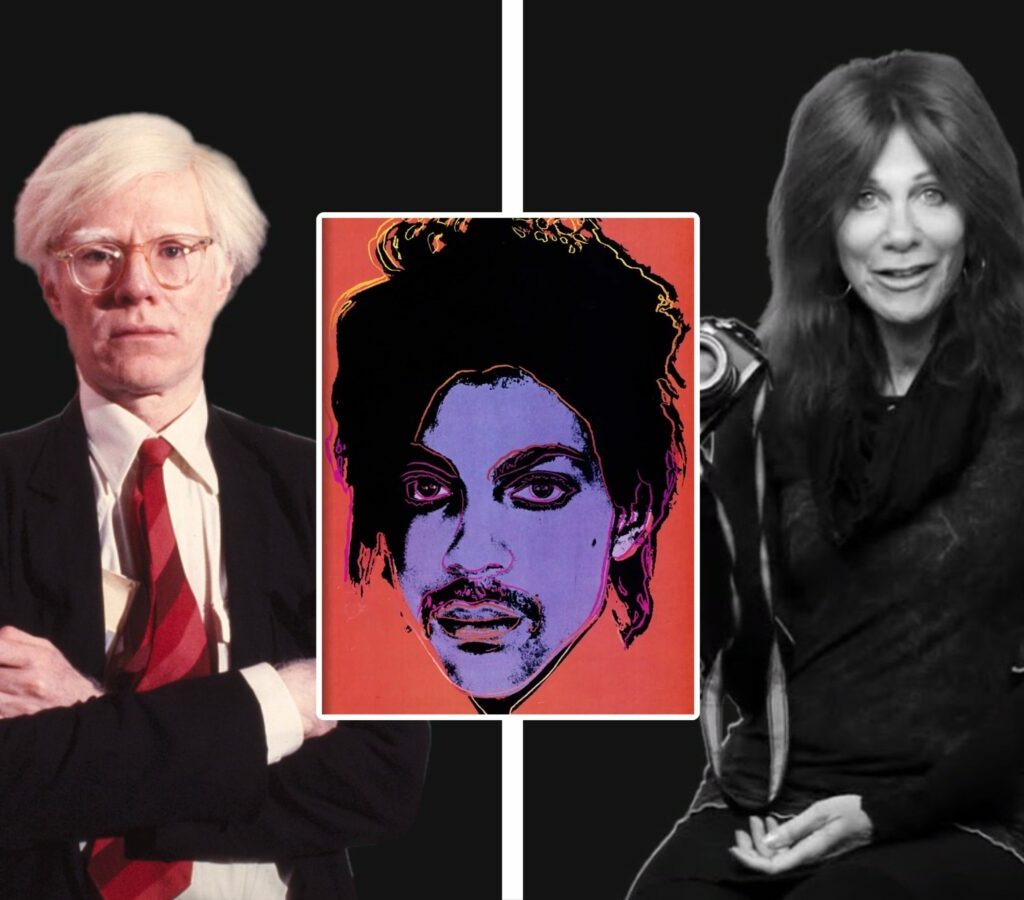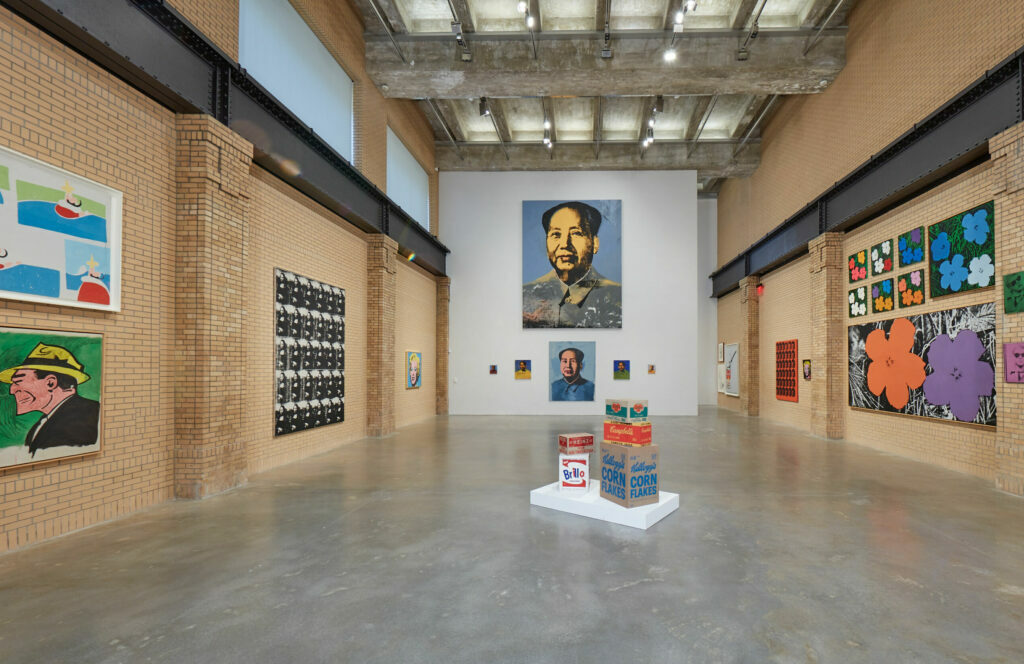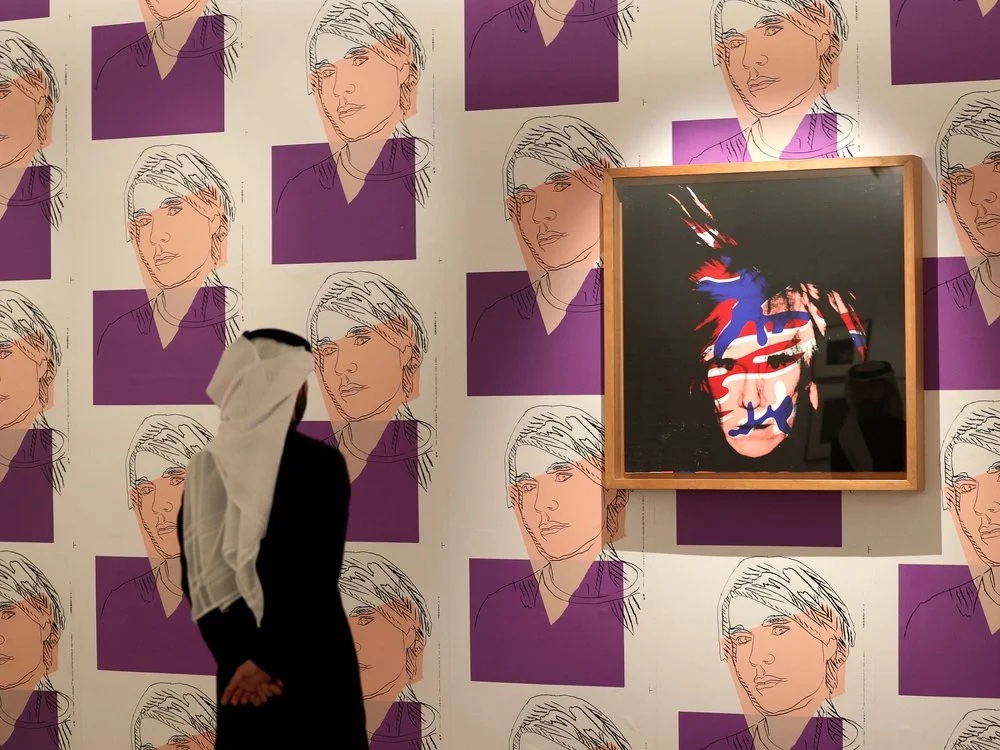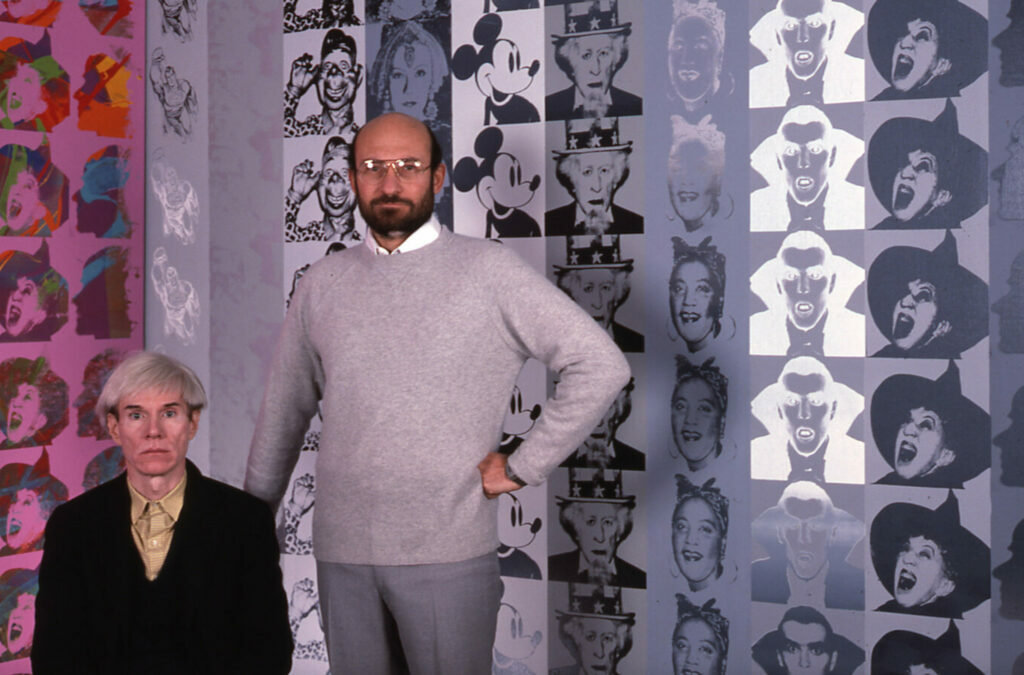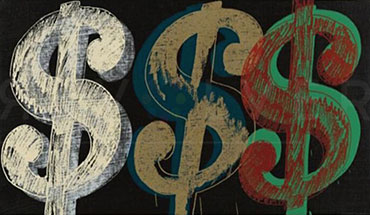About Andy Warhol
Home ▸ About Andy Warhol
Who was Andy Warhol?
Andy Warhol is best described as a “mirror of his age.” He built his career on appropriation of famous imagery and products, fostering of personal celebrity, and his contributions to the Pop Art movement. Through his screenprints, paintings, writing and film, Warhol challenged the American public to reevaluate the meaning of art in a post-war consumer culture. His art and philosophy are intrinsically tied to American culture. Over a span of more than three decades, Andy Warhol crafted a body of work still celebrated today, more than 25 years after his death.
Andy Warhol was born Andrew Warhola on August 6th, 1928 in Pittsburg, Pennsylvania. His parents were carpatho-rusyn immigrants from what is now known as eastern Slovakia, and he was the youngest of three children. As a child, Andy was diagnosed with a neurological disorder called Sydenham Chorea, which would leave him bedridden. It was during this time he focused on drawing, finding inspiration from popular magazines and comic books. His youth was lackluster with an absence of glamor, leading to his inevitable fascination with fame, celebrity culture, consumerism and money.
After completing a degree in Pictorial Design from Carnegie Institute of Technology (now named Carnegie Mellon University) in 1949, Warhol moved to New York to pursue a career as a commercial artist. He quickly gained a range of top clients from Harper’s Bazaar to Tiffany & Co., and was able to display his art in the windows of department stores, such as the famous I. Miller. In the early fifties, he turned to producing his own artwork influenced by his past experience as a commercial illustrator. Initially, Warhol started with paintings and drawings, but gradually started to incorporate photo-based techniques and screenprinting processes which were much more industrial. Advertising techniques were a great vehicle that Warhol would use to communicate with his audience because it was a language that everyone could understand. He started incorporating images of everyday American consumer life into his artwork. It was in 1956 that the Museum of Modern Art noticed and included him in his first major group show.
The 1960s saw an explosion in the Pop Art movement, and Andy Warhol became known as one of the key players. Andy Warhol, like other pop artists at that time, took mundane everyday objects and made them into art. The idea behind Pop Art was to provoke viewers to reevaluate these everyday objects and what they meant to our culture. Pop art presented a challenge to traditions of fine art by including imagery from popular culture such as news or advertising. It was a radical and shocking approach to art making that Warhol embraced, turning advertising, promotion, packaging, consumerism and processing into economic entities. It was during this period he produced some of his most iconic works, which combined his fascination with all things glamor and celebrity with his love affair with commercial production. It was in the 60s and early 70s that Andy Warhol produced some of his best known works, like the Marilyn Monroe, Campbell’s Soup Cans and Coca-Cola Bottles.
The 1970s were a quieter decade for Warhol, following his attempted murder in 1968 by radical feminist author Valerie Solanas. After multiple gunshot wounds and a close call with death, Andy Warhol shifted gears, spending less time in the overt public and more time making art across different platforms. This is the era when Andy Warhol branched out into other entrepreneurial ventures like the magazine he co-founded, Interview, which is still in publication today. Through the 70s and 80s, Warhol contributed film shorts to Saturday Night Live, signed with a modeling agency and designed rock album covers for bands (most notably The Rolling Stones). His artwork captured political figures, sports athletes, and celebrities. His most memorable work of the time included works like the Mao series, Mick Jagger series, and Camouflage.
Warhol passed away on February 22, 1987 after the opening exhibition of The Last Supper paintings. After complaining of abdominal pain, he was scheduled for a routine gall bladder surgery in New York Hospital. He died in recovery. Behind him, Warhol left a legacy of art, film, writing and celebrity. Two years after his death, the plan to build the Andy Warhol Museum in Pittsburgh was announced, which followed the establishment of the Andy Warhol Foundation for the Visual Arts. His influence continues to reach far and beyond the scope of painters and printmakers, inspiring today’s generation of thinkers with the contributions he made to American culture in his lifetime.
More About Warhol: Understanding the Catalogue Raisonné
The Catalogue Raisonné is the most detailed and extensive resource containing Warhol’s inventory of work. There are many versions and editions of the raisonné, which are updated with new findings and advanced research. The development and publishing of a catalogue raisonné typically takes several years to compile. There are three main Catalogue Raisonnés that have been published. Each details Warhol’s work depending on the medium used:
- Prints
- Films
- Painting, Sculpture, and Drawings
Andy Warhol Prints: A Catalogue Raisonné 1962-1987 is the third edition that was compiled and published in 1997 by the Foundation’s curators, Frayda Feldman and Claudia Defendi. In 2003, the edition was revised once more with additional sections entitled Illustrated Books and Portfolios from the 1950s. According to the Andy Warhol Foundation, this catalogue is “the authoritative reference source on the subject, illustrates the breadth of Warhol’s work in printmaking and the depth of his innovations in the field, which together secure his position as one of the most important graphic artists of the twentieth century.”
The catalogue raisonné currently in development is the addition of volume 4 to the multi-volume resource that will document Warhol’s painting, sculptures, and drawings from 1961-1976, aptly titled The Andy Warhol Catalogue Raisonné: Paintings, Sculptures, and Drawings. The four volumes are divided by periods of production, Volume 1 spanning 1961-1963, Volume 2 (1964-1969), Volume 3 (1970-1974) and the volume currently being developed, Volume 4 (1974-1976). This catalogue lists an inventory of works created in the three mediums, along with materials used, exhibitions and other relevant information regarding those particular mediums.
The catalogue raisonnés listed above are the single most comprehensive compilation of Warhol’s works, all of which are publicly endorsed and sponsored by the Andy Warhol Foundation. While research continues to provide new evidence not listed by the raisonnés in circulation, the catalogues continue to be revised and updated to reflect all of the most up to date and accurate information regarding Warhol’s vast collection of works.
Guide to Understanding the Catalogue Raisonné (Prints):
In Andy Warhol Prints: A Catalogue Raisonné 1962-1987, the various types of prints that were developed are identified and catalogued based on several factors, including who the print was intended for, the edition of the print and the date in which it was created. Warhol had his printers create multiple versions, picking and choosing specific editions to be used for various purposes. While Warhol and his printer would decide that one particular color combination seemed like a good choice for the editioned print, another print could be considered suitable as the artist’s personal copy for other reasons.
It is widely known that Warhol used his art as a form of payment from anyone to his lawyer to gifts for his friends and family. These particular prints came from the Artist Proof (AP) editions. He created a separate edition of prints solely as a form of payment for his printer, labeled as Printers Proofs (PP).
While there are multiples of any given portfolio and print, some prints are more valuable than others, depending on their editions. For example, the trial proof prints are often times worth more because of their rarity. One single trial proof is the only one with its particular color combination and/or composition.
What does everything stand for?
(Name of Piece) II. (number): Chanel II.354: the number is a chronological method of cataloguing Warhol’s prints. It is used to distinguish his works beyond their names. For example, his Ads series is a collection of items numbered 350 – 395; each of those items is numbered depending on the order of their creation.
From the Andy Warhol Prints: A Catalogue Raisonne 1962-1987:
- AP (Artist’s Proof): It is used to see the state of the print during the process. Also, intended for the artist’s personal use, commonly about 10% of the edition (but that can be higher, as in this case). Warhol used these editions as forms of payment and gifts to friends.
- BAT (“Bon à tirer”/ “good to print”): This is the print selected by the artist and the publisher to be the image for the edition.
- Cancellation: This is the final impression before the screens are washed.
- CTP (Color Trial Proofs): Equivalent to trial proofs, but are not published in editions.
- EP (Exhibition Proofs): These are of equal quality to the edition and are numbered EP 1, etc. These prints were created exclusively for exhibitions, which is why the number printed is typically in the single digits.
- HC (“Hors Commerce” = “Not for Sale”): These are of equal quality to the edition and are numbered HC 1, etc. Usually given to collaborators, or as samples to show dealers and galleries.
- PP (Printer’s Proof): These are of equal quality to the edition and are numbered PP 1, etc. The printer retains these to be used as a reference. Warhol paid his printer with these editions. The printer was then at his own discretion to keep the prints for himself or sell them.
- TP (Trial Proofs): These are the initial prints, which are pulled during the processing of an edition and usually reveal color and/or compositional changes. Trial proofs are the most rare as each print is compositionally, one of a kind.

